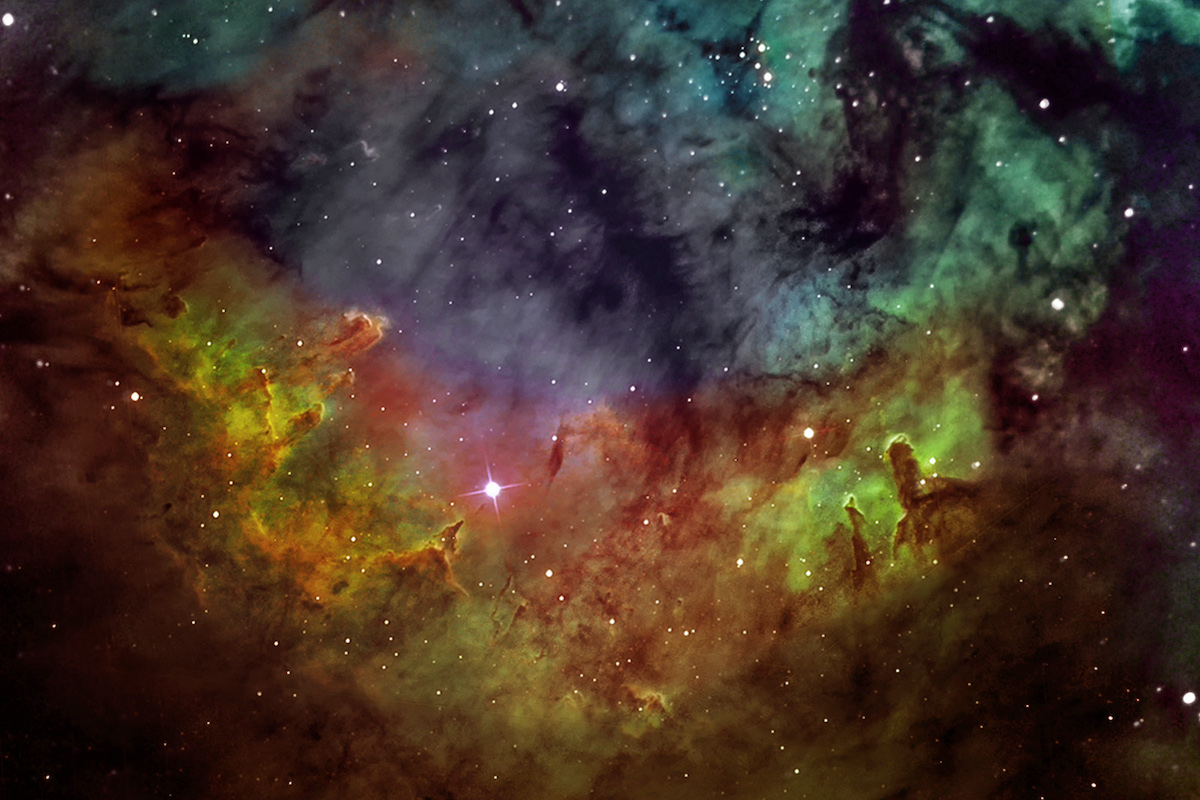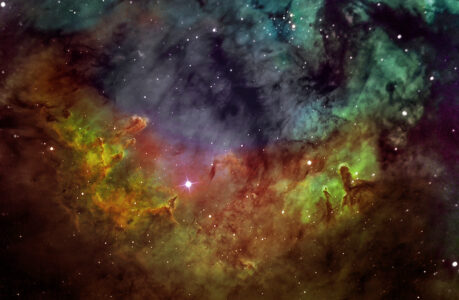The Cepheus constellation is one of the most striking and recognizable constellations in the northern hemisphere. Named after the King of Ethiopia in Greek mythology, the constellation is associated with royalty, power, and nobility. It is located in the northern sky, close to the constellations of Cassiopeia, Draco, and Cygnus, and is visible from Ireland throughout the year.
In this article, we will explore the mythology and beauty of the Cepheus constellation and provide a guide to viewing it from Ireland. We will cover the best times to view, the ideal locations to observe from, and the equipment needed to fully appreciate the celestial wonder that is Cepheus.
Mythology of the Cepheus Constellation:
The Cepheus constellation is named after the King of Ethiopia in Greek mythology. According to the legend, Cepheus and his wife, Cassiopeia, were the parents of Andromeda, who was saved from a sea monster by the hero Perseus. The constellation was named after Cepheus in honour of his bravery and leadership.
In the constellation, Cepheus is depicted as a seated king, wearing a crown and holding a sceptre. His body is formed by a triangle of stars, with his head pointing towards the North Star. The constellation is also home to several other stars and deep-sky objects, including the Garnet Star and the Fireworks Galaxy.
Viewing the Cepheus Constellation from Ireland:
To view the Cepheus constellation from Ireland, you will need to find a clear, dark location away from light pollution. The best time to observe the constellation is during the summer months, when it is high in the northern sky and visible throughout the night.
One of the best locations to view the Cepheus constellation from Ireland is the Ballycroy National Park in County Mayo. The park is a designated Dark Sky Preserve, meaning that it is protected from light pollution and provides an ideal location for stargazing. Other recommended locations include the Kerry Dark Sky Reserve and the Causeway Coast in Northern Ireland.
When observing the Cepheus constellation, it is recommended to use a telescope or binoculars to fully appreciate the beauty of the stars and deep-sky objects. The constellation is home to several notable stars, including the Garnet Star, which is one of the largest known stars in the Milky Way galaxy. The Fireworks Galaxy, also known as NGC 6946, is another spectacular object in the constellation that can be observed with a telescope.
The Cepheus constellation is a beautiful and captivating sight in the night sky. Its rich mythology and striking appearance make it a favourite among astronomers and stargazers alike. By following our guide to viewing from Ireland, you can experience the wonder of Cepheus for yourself. Remember to find a dark location away from light pollution, use a telescope or binoculars to observe the stars and deep-sky objects, and enjoy the beauty of this royal constellation.
How can I see the constellation of Cepheus from Ireland?
To see the constellation of Cepheus from Ireland, you will need to find a clear, dark location away from light pollution. The best time to observe the constellation is during the summer months, when it is high in the northern sky and visible throughout the night.
Once you have found a suitable location, look towards the northern sky and search for a pattern of stars that resembles a triangle. This is the body of Cepheus, with his head pointing towards the North Star. The constellation is also home to several other stars and deep-sky objects, including the Garnet Star and the Fireworks Galaxy.
Using a telescope or binoculars can enhance your view and allow you to see the individual stars and objects within the constellation more clearly. It is important to allow your eyes to adjust to the darkness and avoid using any bright lights or electronic devices that can interfere with your night vision.
Some recommended locations in Ireland for stargazing and viewing the Cepheus constellation include the Ballycroy National Park in County Mayo, the Kerry Dark Sky Reserve, and the Causeway Coast in Northern Ireland. These locations are designated Dark Sky Preserves and are protected from light pollution, providing an ideal environment for observing the night sky.
The mythology of the constellation of Cepheus
The mythology of the constellation of Cepheus is rooted in Greek mythology. Cepheus was the King of Ethiopia and husband of Queen Cassiopeia, who was known for her great beauty. Cassiopeia boasted that she and her daughter Andromeda were more beautiful than the Nereids, sea nymphs who were the daughters of the sea god Nereus. This angered the Nereids, who complained to Poseidon, the god of the sea.
In response, Poseidon sent a sea monster to terrorise the coast of Ethiopia. In order to save his people, King Cepheus consulted an oracle, who told him that in order to appease the monster, he must sacrifice his daughter Andromeda. Despite his reluctance, Cepheus chained Andromeda to a rock by the sea as an offering to the monster.
However, the hero Perseus was passing by and saw Andromeda chained to the rock. He had just defeated the Gorgon Medusa and used her severed head to turn the monster to stone. Perseus then freed Andromeda and married her.
To honour the bravery and leadership of King Cepheus, the constellation was named after him. In the constellation, Cepheus is depicted as a seated king, wearing a crown and holding a sceptre. His body is formed by a triangle of stars, with his head pointing towards the North Star.
The constellation is also home to other stars and deep-sky objects, including the Garnet Star, which is one of the largest known stars in the Milky Way galaxy, and the Fireworks Galaxy, also known as NGC 6946, which is a spiral galaxy that is undergoing intense star formation.
Today, the Cepheus constellation is still an important part of the night sky, and its mythology continues to inspire and captivate people around the world.
The Stars in the constellation of Cepheus
The constellation of Cepheus is home to several notable stars, including the Garnet Star, which is one of the largest known stars in the Milky Way galaxy. Other notable stars in the constellation include:
- Delta Cephei: This star is the prototype of a class of variable stars known as Cepheid variables, which are used to measure distances in the universe. Delta Cephei varies in brightness over a period of 5.36634 days.
- Mu Cephei: Also known as the Garnet Star, Mu Cephei is a red supergiant star that is one of the largest known stars in the Milky Way galaxy. It is located about 2,500 light-years away from Earth and has a radius that is around 1,800 times that of the Sun.
- Errai (Gamma Cephei): Errai is a binary star system that consists of a yellow dwarf star and a red dwarf star. The two stars orbit each other every 66.67 years.
- Alderamin (Alpha Cephei): Alderamin is a blue-white main-sequence star that is around 49 light-years away from Earth. It is one of the brightest stars in the constellation of Cepheus.
In addition to these stars, the constellation of Cepheus is also home to several deep-sky objects, including the Fireworks Galaxy (NGC 6946), a spiral galaxy that is undergoing intense star formation, and the Iris Nebula (NGC 7023), a reflection nebula that is illuminated by a young star.
Deep sky objects visible in the Constellation of Cepheus
The constellation of Cepheus contains several deep-sky objects that are popular targets for amateur astronomers. These objects include:
- The Fireworks Galaxy (NGC 6946): This is a spiral galaxy that is located approximately 22 million light-years away from Earth. It is known as the “Fireworks Galaxy” because it has experienced numerous supernova explosions in recent history, with 10 being observed since 1917. It is an excellent target for astrophotography.
- The Iris Nebula (NGC 7023): This is a reflection nebula located approximately 1,300 light-years away from Earth. It is illuminated by a young star and is named after its flower-like appearance. The nebula is best viewed under dark skies with a telescope or binoculars.
- The Garnet Star (Mu Cephei): This is a red supergiant star located approximately 2,500 light-years away from Earth. It is one of the largest known stars in the Milky Way galaxy, with a diameter estimated to be around 1.2 billion kilometres.
- The Elephant’s Trunk Nebula (IC 1396): This is a diffuse emission nebula that is located approximately 2,400 light-years away from Earth. It is part of a larger star-forming region and is named after its resemblance to an elephant’s trunk. It is best viewed under dark skies with a telescope.
- The Wizard Nebula (NGC 7380): This is an open cluster and emission nebula located approximately 7,000 light-years away from Earth. The nebula is illuminated by the young stars in the open cluster and is named after its resemblance to a wizard’s hat. It is best viewed under dark skies with a telescope.
These deep-sky objects are just a few examples of the many fascinating celestial sights to be found in the constellation of Cepheus. With a telescope or binoculars, amateur astronomers can explore this area of the sky and discover even more wonders.

